20 Stunning Views Along the Great Inka (Inca) Road

20 Stunning Views Along the Great Inka Road
The Inka Road stretches over 24,000 miles through six modern-day countries: Colombia, Ecuador, Peru, Bolivia, Argentina, and Chile. It stands among the great feats of engineering in world history, serving as a network that linked Cusco (in modern-day Peru) with the far reaches of the Inka empire. The Inka road ranges over mountains, tropical lowlands, rivers and deserts and is still crucial in uniting contemporary Andean communities.
On Friday, June 26, the National Museum of the American Indian in Washington, DC, will open the exhibition "The Great Inka Road: Engineering an Empire," which will tell the historical and cultural story of the Inka Road from its beginnings in early Andean cultures to its significance to the Inka Empire and its use in the modern era. The experience features over 140 objects, the oldest being aceramic Chavn stirrup spout bottle dating from ca. 800100 B.C., numerous videos and a wealth of photography.

The pictures and information are collected in the book The Great Inka Road: Engineering an Empire, edited by Ramiro Matos Mendieta (Quechua) and Jos Barreiro (Tano) , available at the NMAI store.


















Tags

 Buzz of the Orient
10 years ago
Buzz of the Orient
10 years agoGreat photo essay, something I was never aware of previously. Thanks for posting this. The acricultural terracing is quite common as well in China's mountainous regions.

 LynneA
10 years ago
LynneA
10 years agoKavika,
Thanks for sharing this fabulous pictorial. There are so many places, fascinating places on this earth, I often wish to be wealthy and live another 100 years! But alas, I'll keep adding to the bucket list and venture where time and money will allow.
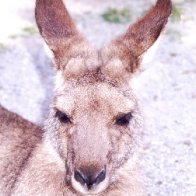
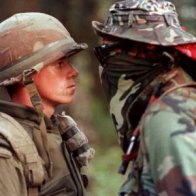
 seeder
Kavika
10 years ago
seeder
Kavika
10 years agoThe terracing is really interesting Buzz. I've seen it here, China and parts of SE Asia as well.
Thanks for stopping by.

 Nona62
10 years ago
Nona62
10 years agoWonderful pic's Kav...my fave for some reason is the suspension bridge....I don't know why, but it really got my attention.

 Buzz of the Orient
10 years ago
Buzz of the Orient
10 years ago You couldn't tempt me with anything to cross it.
The Capilano Suspension Bridge near Vancouver was enough for me.

 seeder
Kavika
10 years ago
seeder
Kavika
10 years agoThe ''bucket list'' can grow and grow Lynne. I was fortunate, in my business life I was able to travel the world over.

 Krishna
10 years ago
Krishna
10 years agoNice collection of pictures.
I had read a lot about the Inca civilization but it was long ago. i remember reading about heir road system-- pretty amazing. Their empire was the largest at that time. I was just googling for articles about the Inca. There are several, but this one looks really good:
Inca Civilization (on Crystalinks)
(BTW that is one of the best sites for anything metaphysical, mystic, etc)

 Krishna
10 years ago
Krishna
10 years agoI have always been interested in natural, traditional herbs for health & other benefits. Probably the first one I ever tried was Peyote:
Lophophora williamsii /loffr wljmsia/ or peyote (/pjoti/) is a small, spineless cactus with psychoactive alkaloids, particularly mescaline.[2] The English common name peyote comes from the like-spelled Spanish name,[3] which in turn comes from the Nahuatl name peytl /pejot/, said to be derived from a root meaning "glisten" or "glistening".[4][5][6] Native North Americans are likely to have used peyote, often for spiritual purposes, for at least 5,500 years.[7] Peyote is native to Mexico and southwestern Texas.
It is found i primarily in the Chihuahuan desert and in the states of Coahuila, Nuevo Len, Tamaulipas and San Luis Potosi among scrub, especially where there is limestone. Known for its psychoactive properties when ingested, peyote is used worldwide as an entheogen and supplement to various transcendence practices, including meditation, psychonautics, and psychedelic psychotherapy. Peyote has a long history of ritualistic and medicinal use by indigenous Americans. It flowers from March through May, and sometimes as late as September. The flowers are pink, with thigmotactic anthers (like Opuntia).
but eye digress...
One "Superfood" I discovered a while back is called Maca. Its has some very positive properties IMO. (I just ordered more from Amazon-- its also old in Whole Foods market at a very high price).
The reason I mention it (maca) is that its from Peru, i believe the Inca used it

 seeder
Kavika
10 years ago
seeder
Kavika
10 years agoTruly a very interesting piece of history, that is in some way still intact RW.
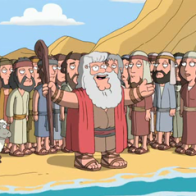

 seeder
Kavika
10 years ago
seeder
Kavika
10 years agoAn awesome road Petey. Llama's are loveable, well most of the time they are.


 seeder
Kavika
10 years ago
seeder
Kavika
10 years agoThere have been recent discoveries of lost cities and civilization in Central America. Really interesting. There were no records of these cities, only oral history of the native people Krish.


 seeder
Kavika
10 years ago
seeder
Kavika
10 years agoKrish, peyote is legal for religious use in the Native American Church. For other native tribes it isn't legal but it is used, since we have used it for hundreds of years.
There are many foods, herbs etc thatare used by us for hundreds, if not thousands of years.
Since Indians are prone to diabetes, it is best for us to stay away from cola's and processed foods. Which I do.

 seeder
Kavika
10 years ago
seeder
Kavika
10 years agoHappy that you enjoyed the article niijii. Lot's of beauty and information.


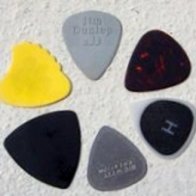
 sixpick
10 years ago
sixpick
10 years agoVery very nice Kavika. There are so many wonderful and interesting places in this world. Now if we could get everyone to let it be safe to travel to all these places if we wanted to do so and many others that would be wonderful.
When I was young and in school I always thought I could visit any place I wanted. Now I realize only photos and pictures are all I'll ever have and not the reality of actually being there, not because of age, health or finances, but because the world is not a very safe place. Maybe it never was. It's not the creatures who either crawl or walk on four legs, it's the creatures who walk on two legs who pose biggest threat preventing us from exploring this earth.
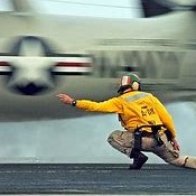
 FLYNAVY1
10 years ago
FLYNAVY1
10 years agoHaving just completed 1491, these assembled pictures dovetail into those readings quite well.
Thanks Kavika.
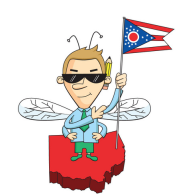
 Robert in Ohio
10 years ago
Robert in Ohio
10 years agoKavika
A truly amazing set of photographs of a beautiful area.
A pictorial testimony to the quality of ancient engineering skills and projects
Thanks



 seeder
Kavika
10 years ago
seeder
Kavika
10 years agoThe world was never a safe place Six. Sometime you just have to risk to enjoy.
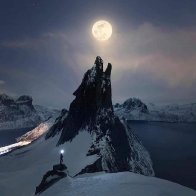

 Perrie Halpern R.A.
10 years ago
Perrie Halpern R.A.
10 years agoAmazing pictures,Kavika. Matt and I were there in our early days, (meaning pre-kids). It is a truly unique site and I would recommend anyone (who has the strength), to go there.

 seeder
Kavika
10 years ago
seeder
Kavika
10 years agoEarly days? in your 20's?
You right, it's a truly unique site and some place that everyone should see.


















You need to be logged in in order to post comments
Please use the log in option at the bottom of this page